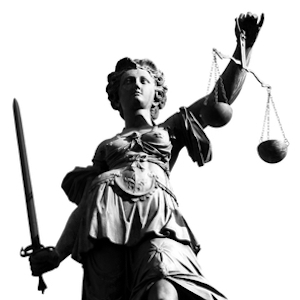By Dr. Ken Broda-Bahm:

Something that we see over and over again in mock trials has now occurred in an actual trial. A recent jury in Allegheny County, Pennsylvania entered a defense verdict in favor of Johnson & Johnson, answering “No” to the question of whether the company’s talc powder caused the plaintiff’s injuries… then the jury went on to award $22 million in punitive damages against the company anyway. Why? Apparently because they believed, causation notwithstanding, that the company was still negligent and still intentionally misrepresented the safety of its product. The jury’s intended sanction won’t apply, of course, but it does speak to a critical motivation that we often see when trying cases to mock jurors.
In a mock trial setting where we are able to record individual preferences before deliberation, and where we are able to see the group reason their way to a decision, we will often see something similar play out:
Juror: The defense is right, the proof that it caused the injury just isn’t there…
Other juror: Yeah… but this company still did a lot of things wrong. They should face some kind of penalty for that.
What happens next is that the jury either followed the Allegheny jury’s path of submitting an inconsistent verdict, or more commonly, they will reconsider their previous answers to bring them into line with their emerging motivations. In other words, it becomes a little easier to find their way to that “yes” on causation once they realize that is the only way to award dollars. That self-correcting tendency within the black box of deliberations makes it likely that damages preferences end up driving liability and cause determinations more often than we are aware.
When a jury sends in an inconsistent verdict, as we see in the Allegheny jury, it isn’t just a legal misunderstanding at work. Rather, it is a sign that the jury’s human purposes are likely to be broader than the law’s narrower purpose. Based on my own observations of mock jurors’ verdicts, i believe that there are four layers of purpose that a jury might have when it comes to damages.
The Proper Purpose: Making a Plaintiff Whole
This is what the law generally tells a jury to do: Compensate the plaintiff for what they have proven they have lost. The focus is on the plaintiff, not on the defendant, and the goal is only to restore — to “make them whole” — in the sense of using dollars to make up for whatever has been lost due to the defendant’s conduct. For all but punitive damages, this is the jury’s only proper role. But, often, it isn’t the jury’s only purpose.
The Equity Purpose: Evening the Scales
A jury might also be motivated to take the metaphoric scales of justice — on the seal or the frieze on the courthouse and apply it to the case at hand. By trying to reverse any gain that defendant might have enjoyed (e.g., by breaching a deal, selling an unsafe product, or unjustly firing an employee), they’re not just paying for a loss (the first purpose) but also trying to bring the scales back into balance by taking something away from the defendant, and by transferring value from one party to another.
The Communicative Purpose: Sending a Message
Jurors understand that courts are part of the larger levers of power, and are a source of interest to society. As such, the verdict is a way of communicating — to the company involved in the case, but also to the industry, to other industries, and to anyone watching the jury, the news, and the courthouse verdicts reports. A verdict, particularly one with attention-getting levels of damages, can be a way for jurors to send feedback to the attorneys and witnesses they saw, and also to the larger world.
The Punitive Purpose: Rendering a Social Punishment
It is a critical mistake for attorneys to think that a jury’s purpose in punishing only matters when punitive damages are allowed on the verdict form. In contrast, I frequently observe jurors gravitating toward a punitive rationale for damages any time there is a combination of 1.) anger at a defendant, and 2.) Loose or subjective categories of damages that are subject to a jury’s judgment. When those conditions are present, any jury can, and generally will, allow their anger to shape their verdicts, and potentially soften a plaintiff’s burden of proof, when it comes to non-economic categories of damages.
The jury that Johnson & Johnson faced seemed to understand its role when it came to connecting liability to causation, or not, but also seemed to want to go beyond that role in order to punish the company, send a message, and perhaps to even the scales as well. When assessing your own case, it helps to consider and to plan for, not just a jury that narrowly follows the law, but for a jury that brings the full spectrum of motivation. In other words, ask what would make jurors want to see the ultimate amount as low or high, and consider what parts of the story, what testimony, and what evidence might pull them in either direction.
____________________
Other Posts on Damages:
- Defendants, Frame Your Alternate Damages as a Test, Not an Admission
- Profile Your Nuclear Juror (Based on the Research)
- Stop Speculating on Your Damages Exposure
____________________